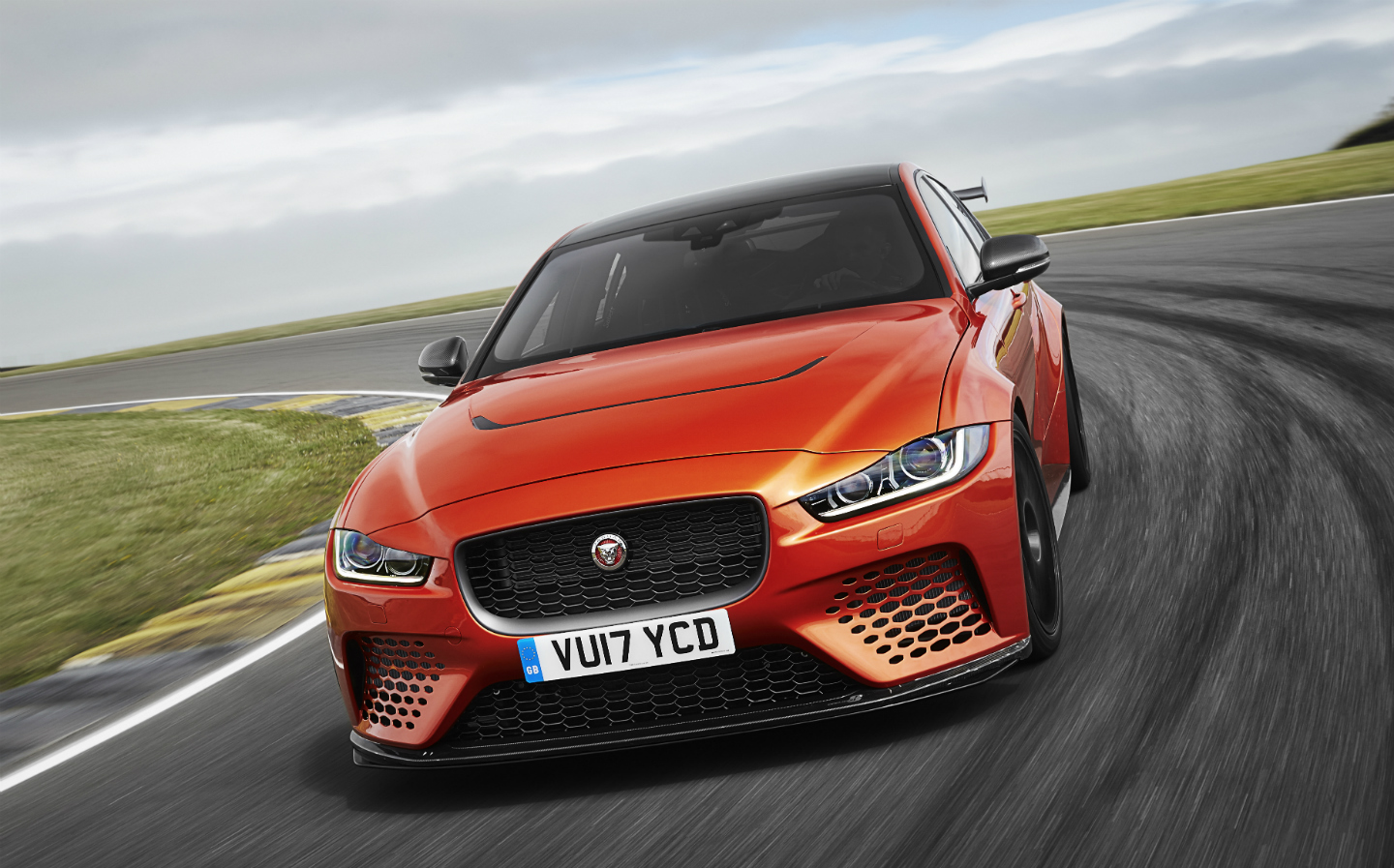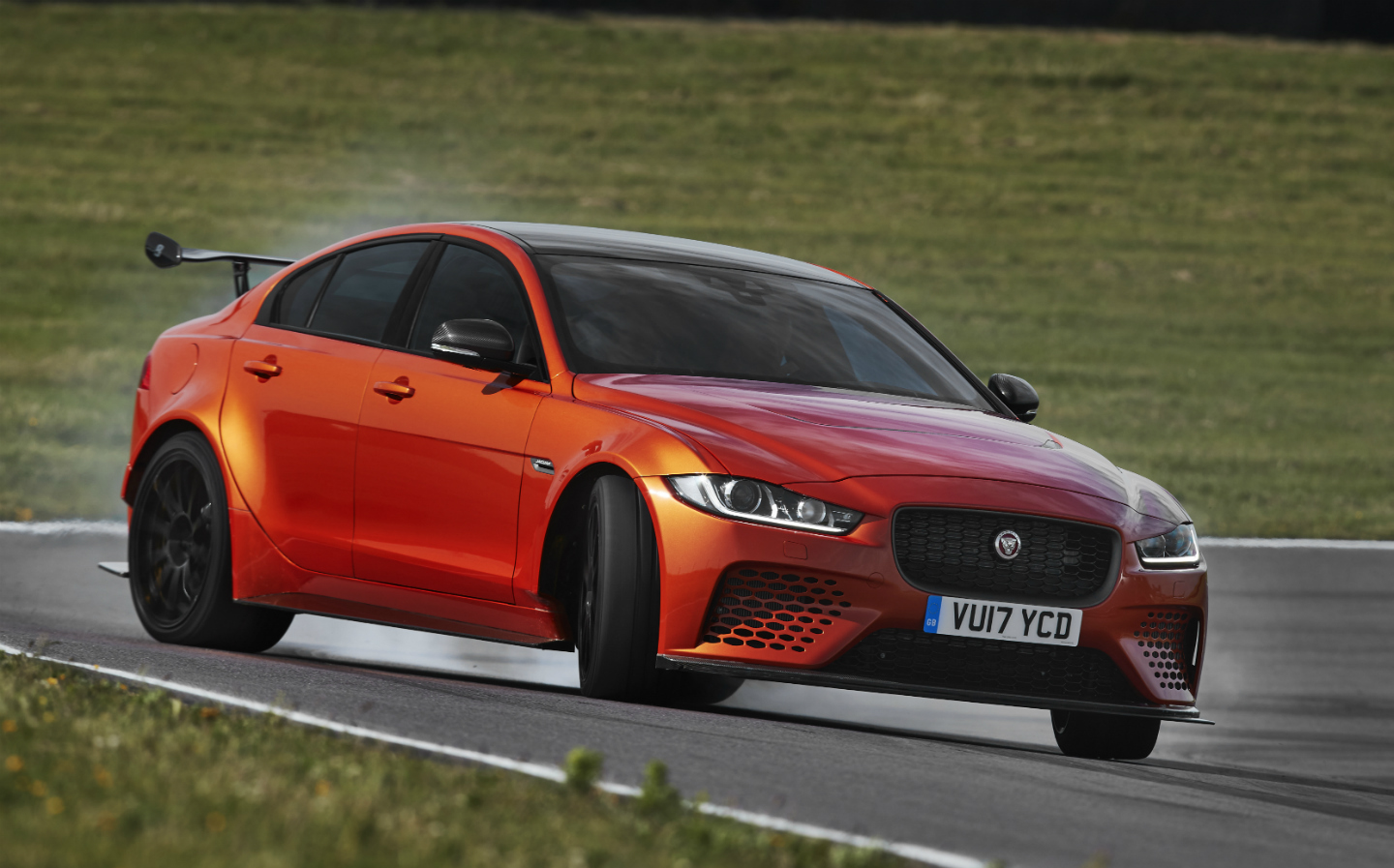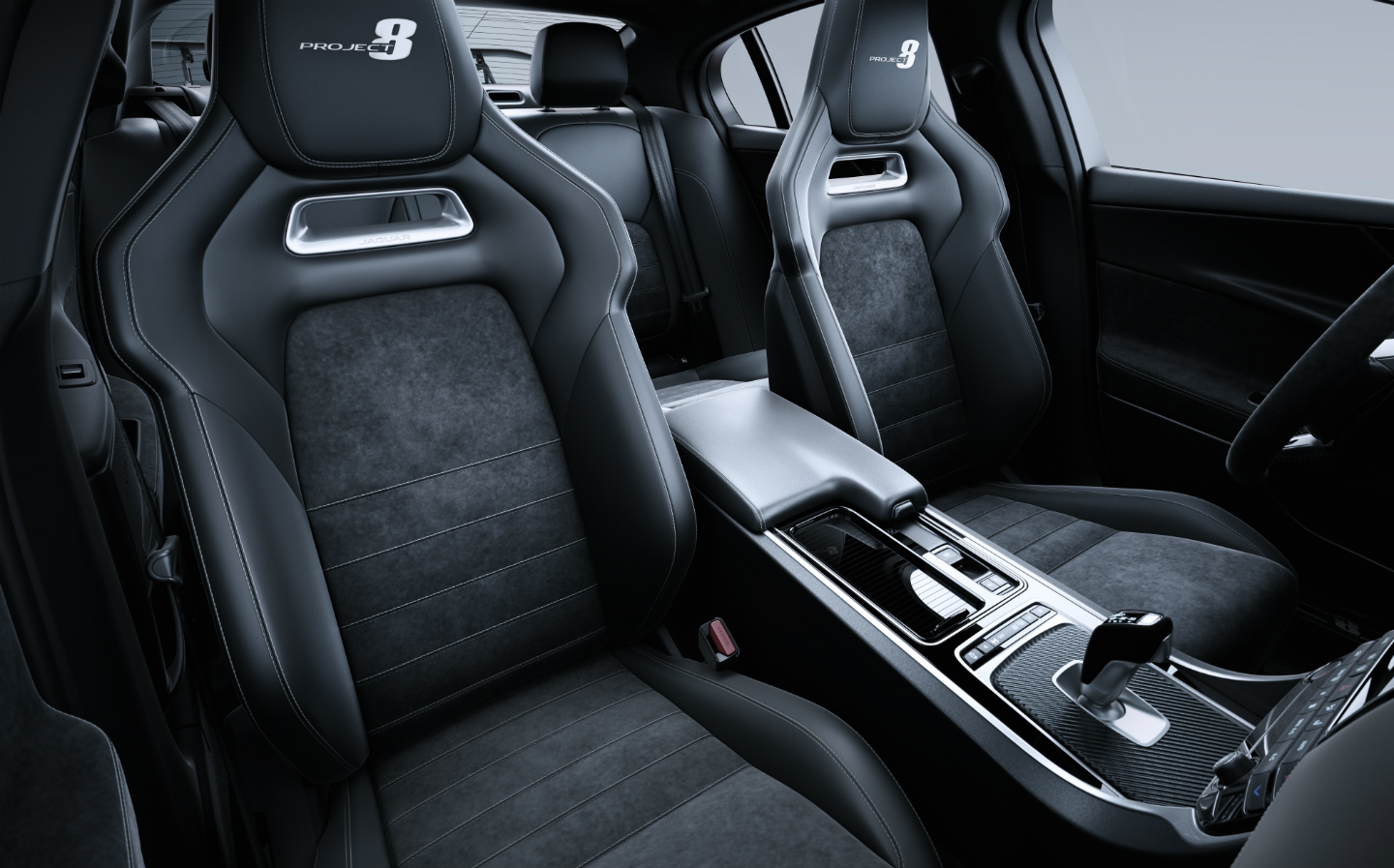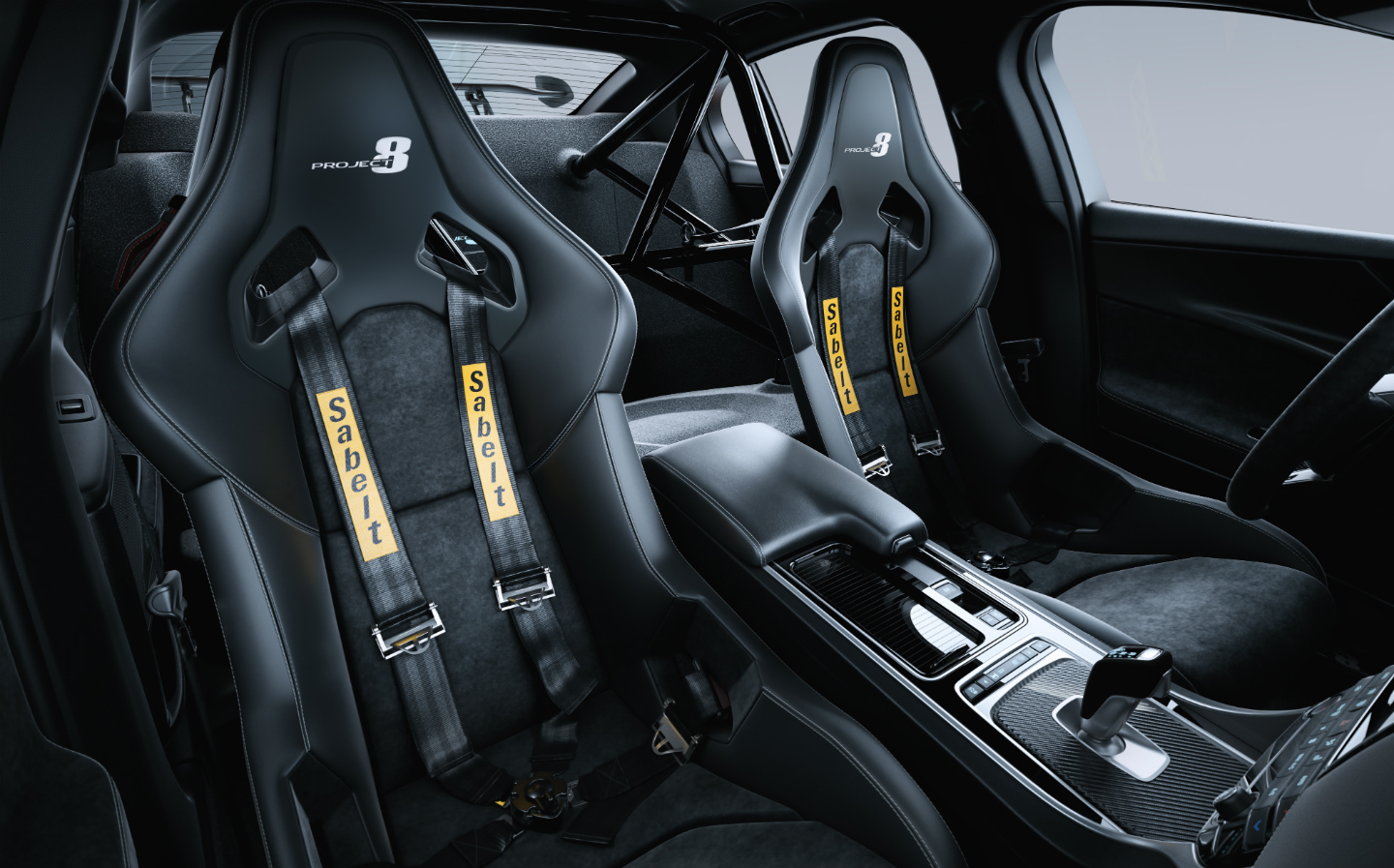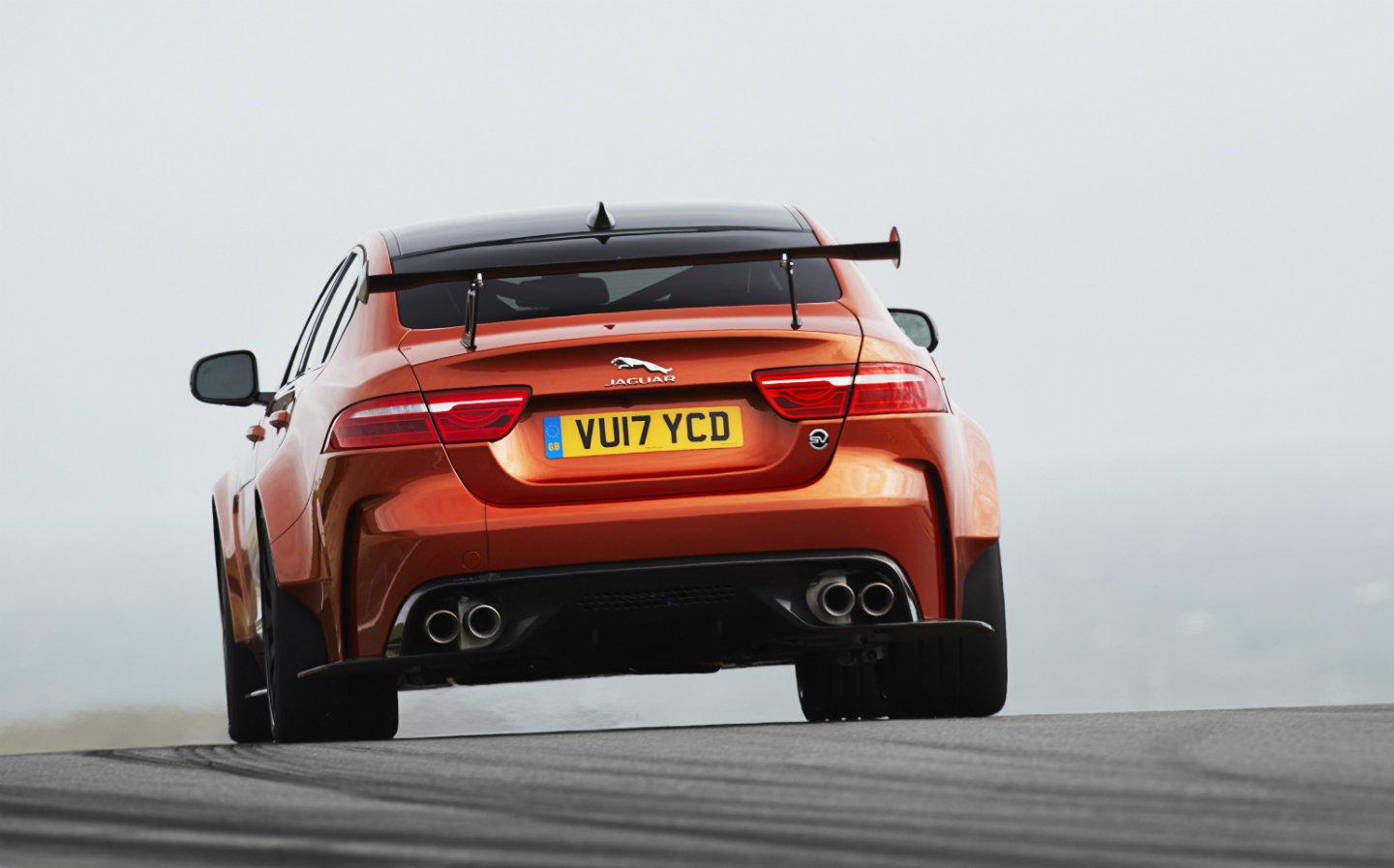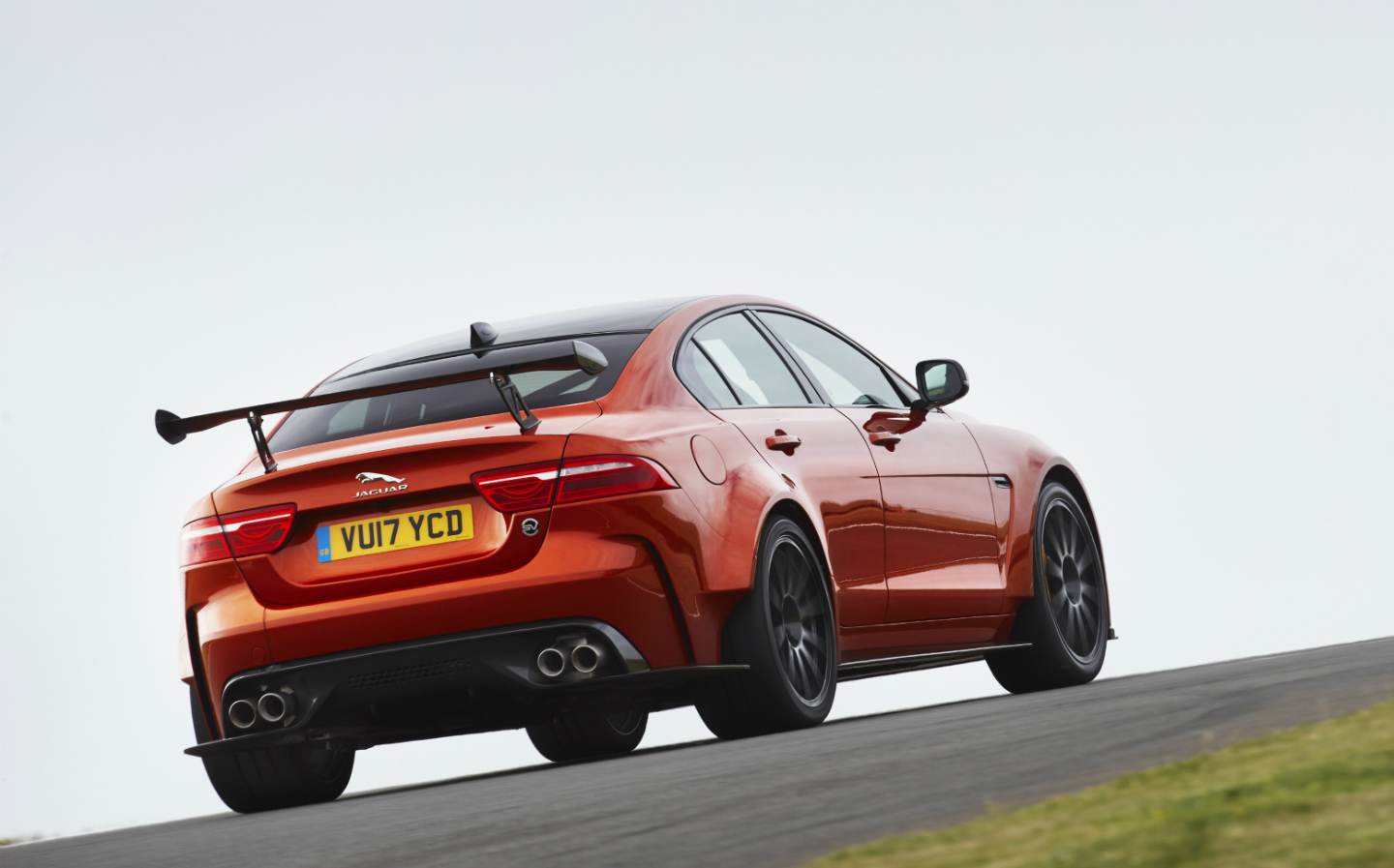Hear 200mph Jaguar XE SV Project 8 wailing like a banshee at Shelsley Walsh
But no right-hand drive for UK
AT A time when Jaguar’s best-selling car is an SUV and the company is preparing to introduce an all-electric model to take on Tesla, car enthusiasts might have wondered whether the big cat was losing its bite. Not a bit of it. The British car maker has revealed its most powerful sports car ever, the new Jaguar XE SV Project 8, and says the new super saloon can eat BMW M3s and Mercedes-AMG C63s for breakfast.
In a sign that the XE SV Project 8 is an extreme machine, it costs £149,995 and just 300 will be built. So what’s under the surface of the new model?
The car features a 5-litre, supercharged V8 engine that has been tuned to produce 592bhp. That’s almost 100bhp more than the most racy model that BMW’s M division makes, the M4 GTS, or Mercedes-AMG’s C63S.
Browse NEW or USED cars for sale
Naturally, such prodigious power could wear out the rear tyres after one trip to the village shop to buy a paper and pint of milk. So the XE SV Project 8 features four-wheel drive as standard.
This combination of power and grip makes for dizzying performance. The company says the super saloon can accelerate from 0-60mph in 3.3 seconds. And should buyers take the British-built model to a section of German autobahn without speed limits, they’ll find that with a top speed of 200mph, it can leave Germany’s finest machinery trailing it its wake.
The task of creating the most powerful Jaguar ever was handed to Jaguar’s Special Vehicle Operations (SVO) division, based in Coventry, which also engineered the F-Type Project 7 rip-roaring roadster.
In addition to squeezing as much power as possible from the 5 litre V8 engine that’s used widely within the Jaguar Land Rover range of models, SVO engineers set about removing weight from the XE SV Project 8.
Many of the body panels, wings and underfloor have been made from carbon fibre. Its wide track calls for flared wheelarches, and the wheels are said to use silicon nitride ceramic bearings that come from Formula One cars.
The revised suspension features variable dampers which can be lowered when driving on a race track, and the four-wheel drive system incorporates a rear electronic active rear differential, to help give agile handling.
Ironically, the SVO team has some bad news for British petrol heads: Jaguar will only make the car in left-hand drive configuration.
Drivers can choose between a semi-civilised four-seat model, which features lightweight sports seats that have magnesium frames, or an optional Track Pack that removes the back seats, and uses two carbon fibre front seats with racing harnesses and a sturdy cage in the rear.
Mike Stanton, director of the SVO division, said: “The SVO team is full of performance car enthusiasts that are now briefed to deliver motor sport science and soul in what is effectively a four-door supercar.”
Ironically, the SVO team has some bad news for British petrol heads: Jaguar will only make the car in left-hand drive configuration. That may not be much of a problem on a flying lap of Silverstone, but when trundling in traffic on the road it is a hindrance to visibility making overtaking particularly difficult.
Jaguar told Driving that the decision was dictated by its desire to fit its most powerful engine into its most compact saloon body; it would only fit in the left-hand drive setup.
That’s a shame. Even extreme machines like the BMW M3 GTS and Porsche 911 GT3 RS are available as right-hand drive models. But with so few being built, it’s doubtful Jaguar’s most powerful car yet will be left gathering dust in showrooms.
Tweet to @squarejames Follow @squarejames


